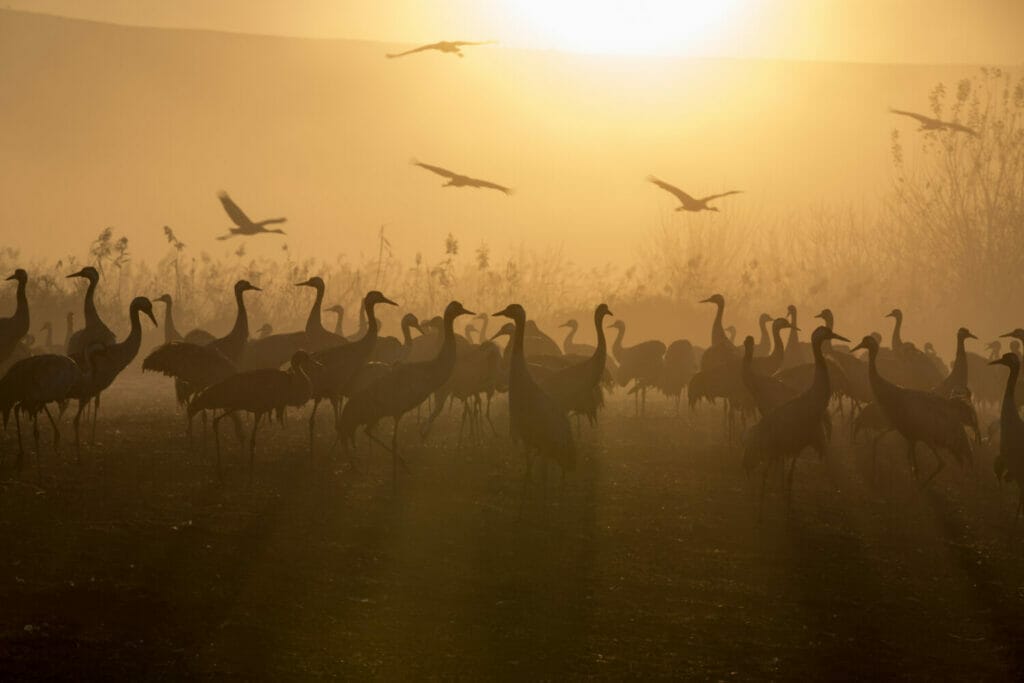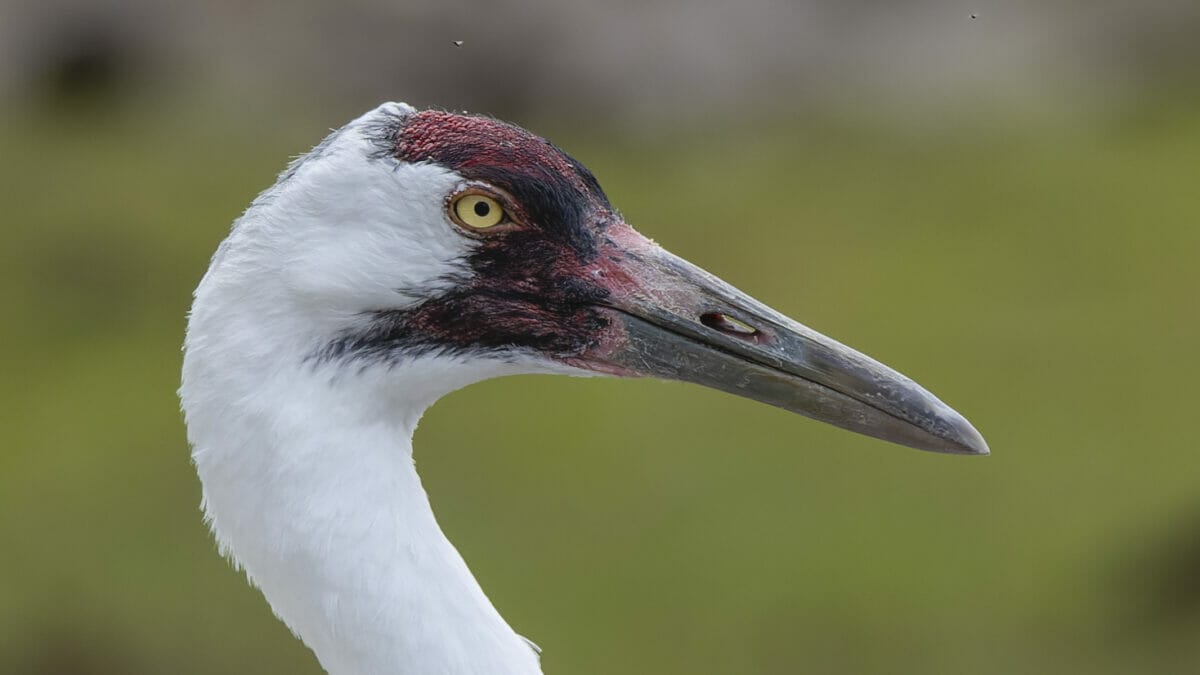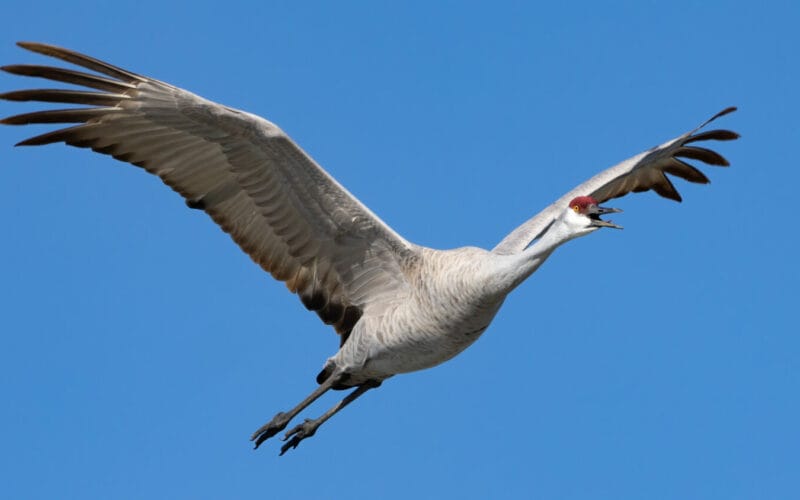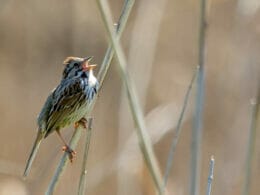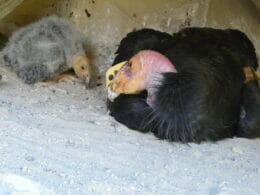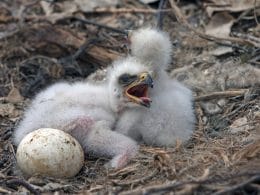There are 4 species of crane in the ABA (American Birding Association) taxonomy list. The family is Gruidae and the wider group is Gruiformes, which also includes the families of Rallidae (rails, coots and gallinules), Otididae (bustards) and Turnicidae (button-quails). It is certainly an eclectic mix! In this post, we are looking at the species of crane found in the United States.

Gruidae
There are 15 members of the Gruidae family and they are found on every continent except for South America. To the average eye, cranes may look like herons but they are substantially larger with a bulkier body. Heavy, short bills and trailing legs in flight are also diagnostic. These cranes feed in open pastures and marshes and as they nest there too, they are in constant danger from human development.
Cranes have a slightly different arrangement on their feet. They have 4 toes – 3 pointing forward and the hallux , which points backwards. However, it is elevated and only when the bird is sinking into soft ground does it make contact.
Because hatchling cranes are so vulnerable, they have to be moving very quickly. Hence, they will be out of the nest shortly after hatching, even as they are covered in an orange down.
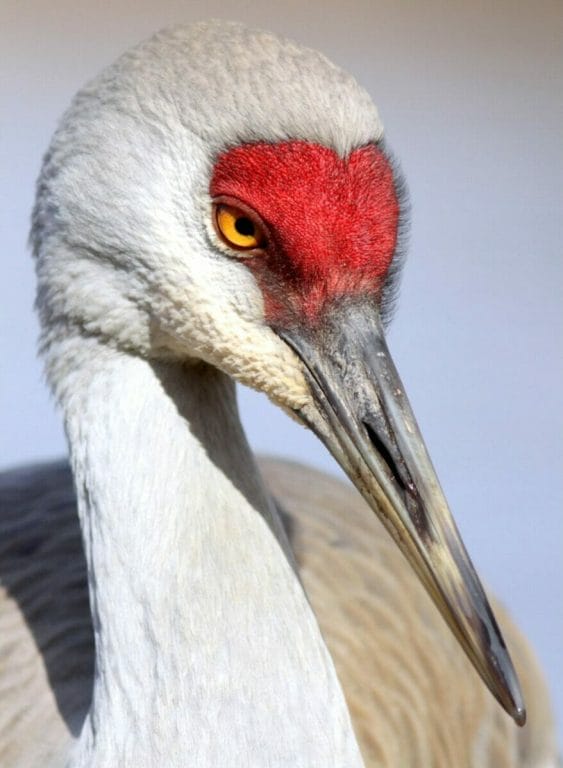
Sandhill Crane (Antigone canadensis)
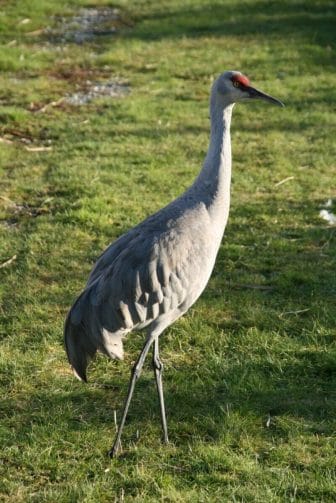
Identification and Size
Sandhill Cranes, as all others, are very large, elegant birds with a sedate manner when not in courtship. Their plumage is largely gray with some rusty markings on the wings. In their second year, the cranes develop that stunning red cap that contrasts with a bright yellow eye. Male and female birds have the same plumage.
The Sandhill Crane has a thick bill which it uses to dig around for suitable vegetation, grains and small creatures. The rest of the head is mostly bald, with some bristles around the forehead, lores and crown.
Height: 39.3 – 47.2 inches
Wingspan: 70 – 78 inches
Male Weight: 8.3 pounds
Female Weight: 7.4 pounds
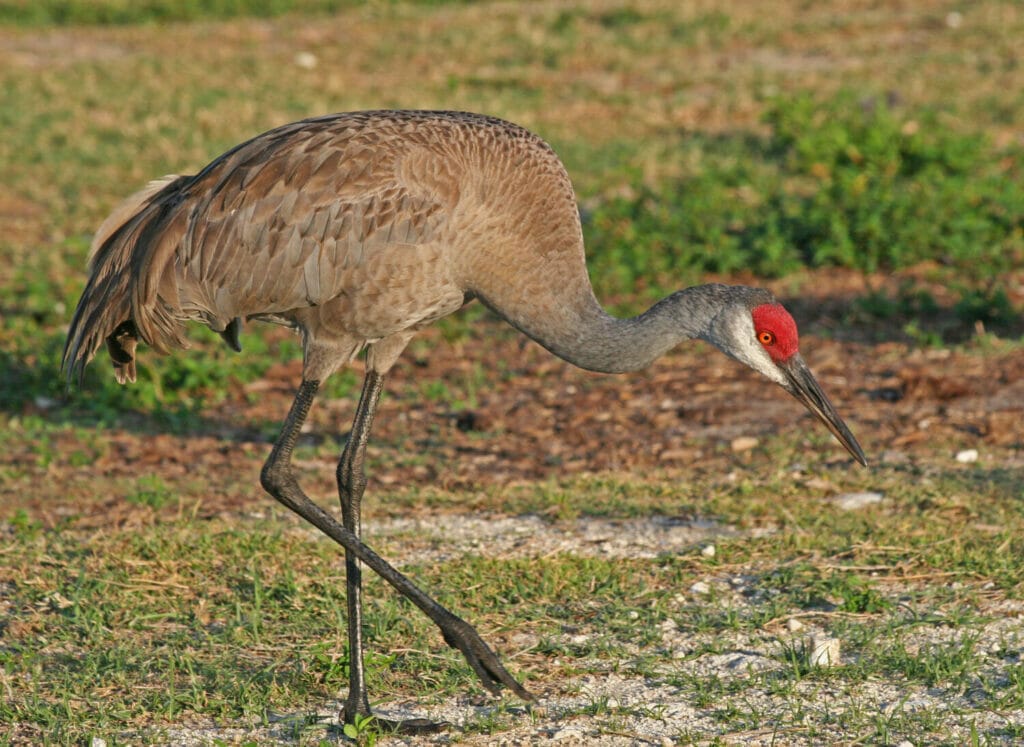
Distribution

During the human expansion across the continental United States, the populations of Sandhill Cranes became fragmented and semi-isolated. Now that numbers are recovering, these populations are merging as they overlap. This makes monitoring and studying the cranes challenging and complicated. There are established populations that migrate, are resident and there is a mid-continent group.
In Florida and Mississippi, there are 2 subspecies of Sandhill Crane – A. c. pratensis and A. c. pulla respectively. They are both non-migratory populations.
Migratory populations of Sandhill Cranes can be found all across the U.S. including western Alaska. The breeding range is from Michigan, North and South Dakota, Colorado, Utah and north eastern California. There are 6 distinct populations within this group and monitoring shows no evidence of interbreeding.

The Eastern Flyway population belong to the subspecies A. c. tabida and is present in east coast states from Maine, south to the Dakotas. Most of this population can be found in the Great Lakes region. They are part of the Mid-Continent Population, which also contains the A. c. canadensis and A. c. rowani subspecies. These groups breed from northern Minnesota, through central Canada and into Alaska. The monitoring of these groups, their breeding grounds and migration routes is complex with many areas identified and much overlapping of the populations.

Call
Habitat and Diet
Sandhill Cranes are naturally occuring in the United States and they have a range of habitats including:
- grasslands
- pine savannah
- agricultural land
- marshes
- sedge meadows
- fens
The cranes generally breada in shallow marshes and open freshwater wetlands.
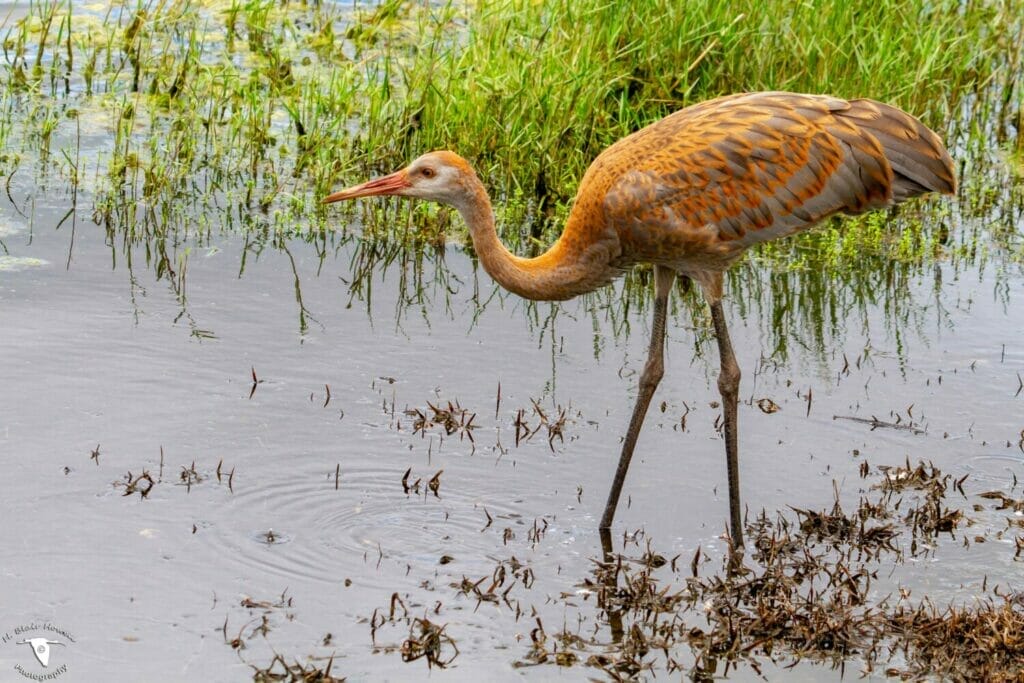
Sandhill Cranes are omnivorous and so will eat anything suitable that they can forage on and under the ground. They will also probe through mud and in shallow water. Foods consumed include:
- waste grain
- smal vertebrates
- small invertebrates
- hatchling birds
- small rodents
- eggs
- amphibians
- acorns
- tubers
- berries
Interesting Fact
During courtship the Sandhill Crane puts on a spectacular display and have been subject to much study. 8 displays are recognized as part of the courtship process:
- bill up
- copulation
- non-aggressive calls
- upright wing stretch
- horizontal head pump
- vertical toss
- dancing bow
- dancing vertical leap
Whooping Crane (Grus americana)

Identification and Size
The Whooping Crane is larger than the Sandhill Crane and it is, in fact, the tallest bird in the States. Sexes are alike with bright white plumage and black primaries, which can only be seen in flight. The crown is a deep red and a dark gray/black patch behind the bill, extending to under the eye. The eye is bright yellow.
Height: 59 inches
Male Weight: 16 pounds
Female Weight: 14 pounds

Distribution
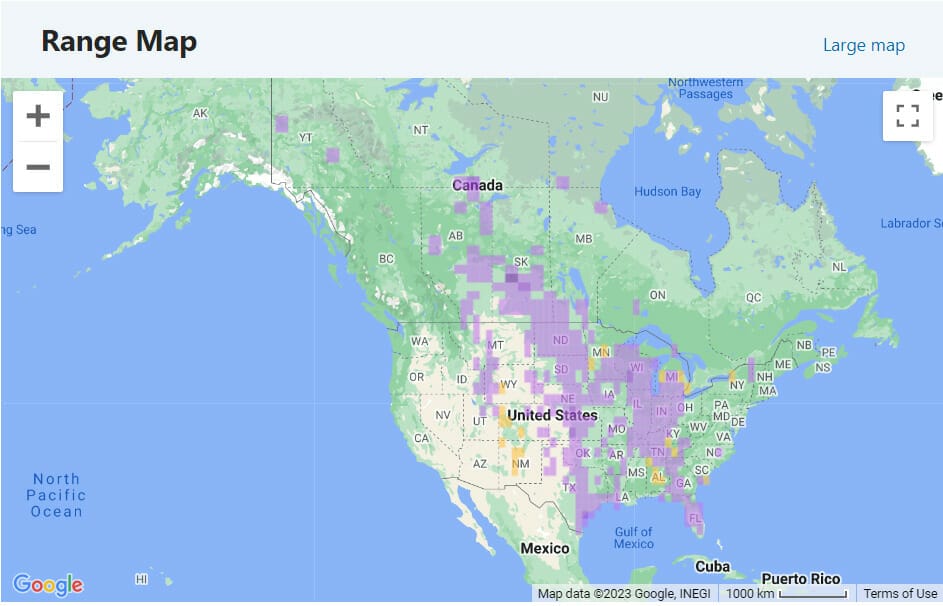
Much less common than the Sandhill Crane, with populations restricted to the eastern and central United States, and a western group. Historically, it was thought that there were several migration routes from north to southern wintering grounds. The AWP population winters in the Gulf of Mexico in the Aransas National Wildlife Refuge, Texas and migrates to breeding grounds in the Wood Buffalo National Park in Canada. This group is the only Whooping Crane population that is self-sustaining. Attempts have been made to re-introduce the crane to Florida, Louisiana and in the Rocky Mountains. All three have failed to establish successfully.

Call
Habitat and Diet
The populations of Whooping Crane have not moved or extended locations. The breeding area in Wood Buffalo National Park is a wetland area surrounded by spruce and willow and the cranes nest primarily in bulrush areas. Wetlands feature heavily again in the wintering grounds but birds will also look for tidal flats. Migration stopovers are also similar but there may be more pressure on them due to human development.
The Whooping Crane is also omnivorous and will eat:
- crustaceans
- aquatic insects
- molluscs
- minnows
- amphibians
- snakes
- tubers
- rodents
- grasshoppers
- waste corn

Interesting Fact
Bonded pairs of Whooping Crane also have social and courtship movements. Some of these are:
- spread-hold
- unison call
- tuck-bob
- object toss
- gape-sweep
- bill stab
Common Crane (Grus grus)
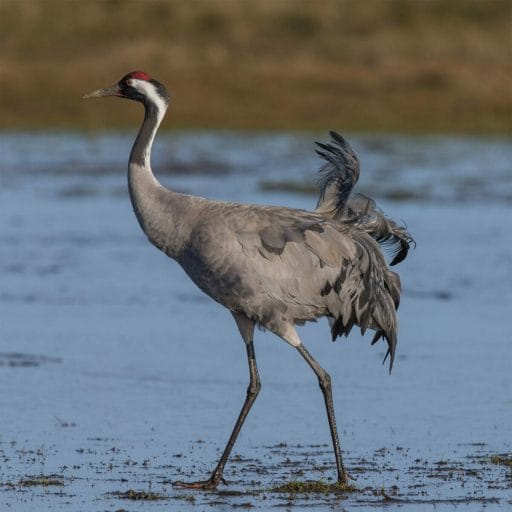
Identification and Size
Similar to the Sandhill Crane, the Common Crane is a mid gray with some rust on the wings. It has black primaries and a black throat extending to around the bill. A white patch around the ear flows down the nape. A small red crown develops into a black patch. Juveniles only develop this plumage in their third year.
Height: 37 – 47 inches
Wingspan: 71 – 79 inches
Male Weight: 11.2 – 13.4 pounds
Female Weight: 9.9 – 13 pounds
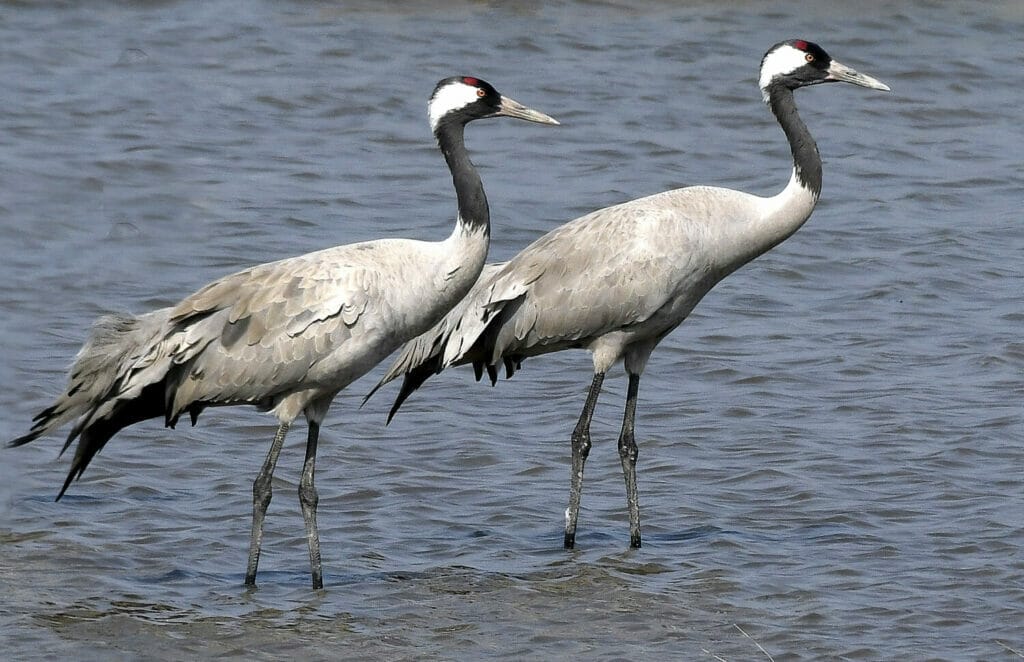
Distribution
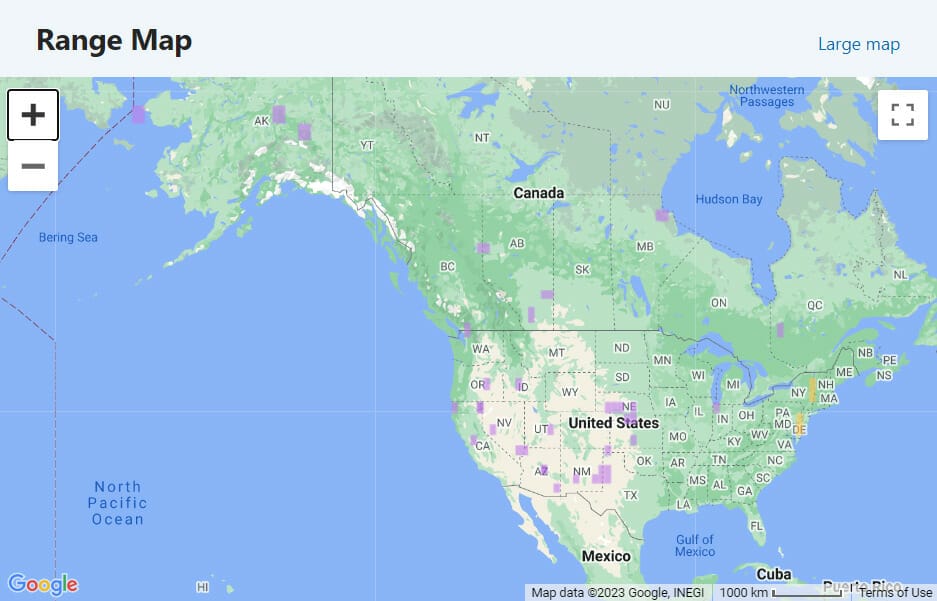
There are only just over a thousand sightings of the Common Crane throughout the continental United States on eBird. These have been in the mid-west and western states. It is thought that these birds may be vagrants, joining Sandhill Cranes on their migration from north east Asia. Some are certainly escapees.

Call
Habitat and Diet
Prefers wetlands in shallow areas, including forests. It will look for food in agricultural fields during winter.
The Common Crane is also omnivorous and will eat:
- roots
- tubers
- grasses
- legumes
- nuts
- invertebrates
- amphibians
- rodents
- snakes
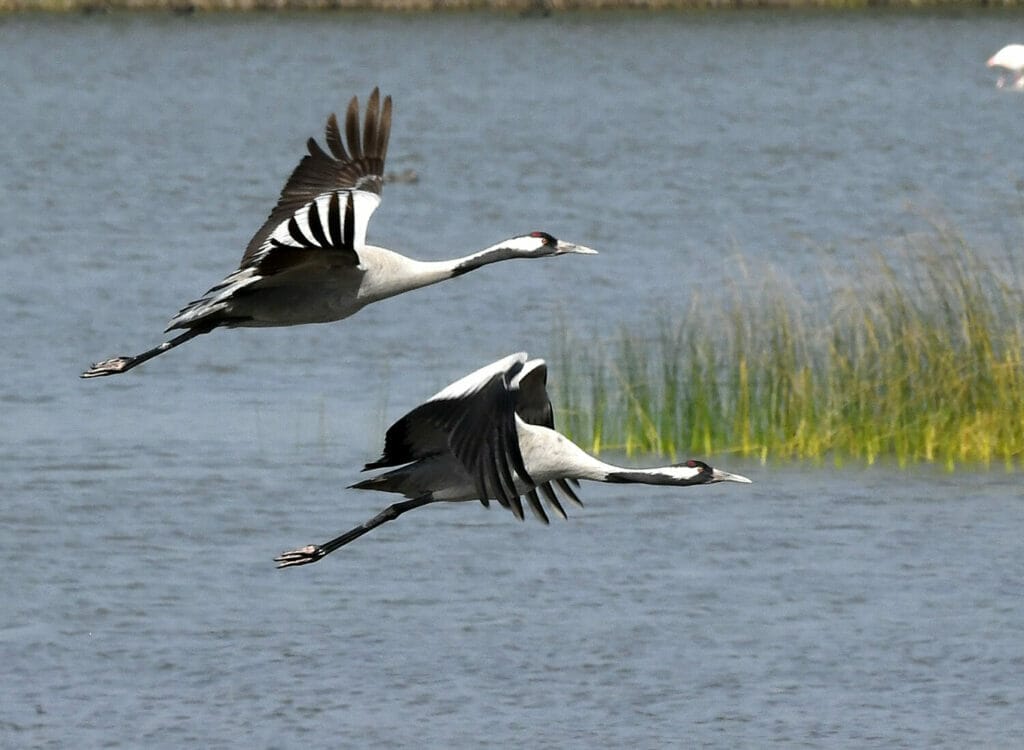
Interesting Fact
The Common Crane is also known as the Eurasian Crane and is mostly found in Europe. It is only one of 4 species of crane that is not classified as threatened.
Hooded Crane (Grus monacha)

Identification and Size
The smallest of our cranes, the Hooded Crane is a darker gray on the body with a pale gray neck and red forehead.
Height: 35 – 39 inches
Wingspan: 63 – 71 inches
Male Weight: 7.2 – 10.7 pounds
Female Weight: 7.5 – 8.2 pounds
Distribution

Rarely seen outside of Asian breeding grounds. Sightings in the U.S. only number 128 on eBird and the ABA only added it to their checklist in 2021 after a bird was shot in Alaska. Birds seen in the U.S. are vagrants.

Call
Habitat and Diet
During breeding periods, the Hooded Crane can be found in secluded forest wetlands. Its range extends in non-breeding times to grassy areas around rivers, shallow lakes and marshes.
Diet depends on location at breeding or over wintering sites. Foods consumed include:
- acquatic plants
- berries
- insects
- amphibians
- grains
- rice
Interesting Fact
The Hooded Crane is classed as Vulnerable and numbers have declined due to human expansion and conflict with farms. However, the remoteness of the breeding sites give hope for this bird’s future.
FAQs
During the spring, the Platte River in Nebraska plays host to around 80% of all Sandhill Cranes during their spring migration. A good place to start your search.
Only the Sandhill and Whooping Cranes are native to the United States. The Common and Hooded Crane are rare sightings.
Simple answer and the same as for many other species – habitat loss usually caused by human intervention.
In many cultures, cranes are revered and looked upon as mythological creatures. They are certainly elegant animals and if you have ever seen a crane in courtship display, they are magnificent.
Thanks to https://birdsoftheworld.org/bow/home for the scientific data.
